It had been a while since I’d read through one of the Gospels from start to finish, so I picked the Gospel of Mark and started reading a section each day. I got so much out of focusing on Jesus in one Gospel that I have decided we will have Scripture Plans on all four gospels this year – starting, of course, with the Gospel of Mark Scripture Plan in February. And to get us prepared to dig in I thought we would start with a quick look at the Gospels. What are the Gospels? Why are there four Gospels? How are they different? And what does all this mean for our faith and our understanding of the Bible?
This post contains affiliate links, which means that for each purchase made I receive a small contribution at no extra cost to you. For more information please see my policies page.
What are the gospels?
The first four books of the New Testament are known as the Gospels. Gospel means ‘good news’, so the Gospels were written to bring us the Good News of Jesus. We need to remember this purpose when reading the gospels. They are not simply biographical accounts but have a theological and ministry purpose – to bring people to faith in Jesus.
Related: Bible Study for Beginners
Who wrote the gospels?
First, let’s get to know the gospel writers, known as the Four Evangelists.
Matthew (also called Levi) was a tax collector who left his work to follow Jesus. (Mark 2:14-15; Luke 5:27-29 and Matthew 9:9-13).
Mark accompanied Paul and Peter on their mission trips (Acts 12:12-17; 2 Tim 4:11; 1 Peter 5:13). He is also thought to be the young man who ran naked from the Garden of Gethsemane after Jesus was arrested (Mark 14:51).
Luke was a Gentile doctor who also travelled with Paul (Col 4:14; 2 Timothy 4:11: Philemon 24). Luke also wrote the book of Acts where he gives a first-hand account of his mission with Paul (Acts 20:13-21:6) and his journey with Paul to Rome as a prisoner (Acts 27:1-28:16) which included being shipwrecked in Malta.
John was also a disciple of Jesus, and the brother of James. He is mentioned frequently in the Gospels, often referred to as ‘the disciple Jesus loved’ (John 13:23). He also wrote three epistles referred to as 1 John, 2 John and 3 John and Revelation.
why are there four different gospels?
If you were reading four accounts of the one person written by four different people the accounts would be very different, right? Well, it is the same with the four Gospels. But the four Gospels aren’t just written by different people, they were also written for different audiences, with different purposes in mind and in different styles.
The different audiences and purposes of the four gospels
Matthew was writing mainly to Jewish Christians. There are many references to the Old Testament and how it is fulfilled in Jesus. The word fulfil or fulfilled appears 18 times.
Mark, however, is written to Gentile (non-Jewish) Christians in the Roman Empire. He focuses mainly on the actions of Jesus. It is thought that Mark’s Gospel was written first and Matthew and Luke based their gospels on Mark’s account. These three Gospels are known as the Synoptic Gospels as they are similar. Find out more about the Gospel of Mark, and download the free Scripture Plan here.
Luke’s Gospel is unique in that it is addressed to an individual, called Theophilus. Like Mark, it is aimed at a Gentile Christian audience. Luke writes about salvation for all people through a compassionate Saviour and the work of the Holy Spirit. Luke also focuses on community. Through Christ, people are restored to a community that includes everyone. Of the four gospels, Luke’s gives the most attention to the women Jesus met.
John doesn’t specify a particular audience in his writing, but John 20:31 suggests he intended it to be read by Christians and non-Christians. This verse also gives us John’s purpose: he is writing so that people will believe that Jesus is the Messiah, the Son of God and have life in his name. Many of the accounts and events recorded in the other gospels, like the parables, are missing from John or written in a more reflective style.
4 Portraits of Jesus in the Gospels
The Gospels of Matthew, Mark, Luke and John all declare that Jesus is the Messiah, the Son of God and Saviour, but each gospel focuses on portraying Jesus slightly differently. When we put them together we get a full picture of all that Jesus was and is.
Matthew portrays Jesus as the Messiah, the fulfilment of Old Testament promise, and as a King we are to worship.
Mark also presents Jesus as the Messiah, but emphasises this through the theme of suffering. Mark focuses on what Jesus does, we see him in action as a servant and we are to follow him.
Luke places emphasis on Jesus as Saviour, and also highlights the involvement of the Holy Spirit. We are to seek him and to receive his salvation.
In John’s Gospel we see Jesus as the Son of God and the Word of God. Our intended response is to believe in him. (The word ‘believe’ occurs 86 times in the Gospel of John but only 34 times in the other three gospels combined.) John’s gospel is much more focused on who Jesus is than what he does.
When we put together all the similarities and differences between the four Gospels we see that they work together to give us a greater understanding of who Jesus is, what he did, and what we should do in response.
resources:
This is just a quick introduction to the four gospels and their differences. Here are some more resources for you to check out if you would like to dig deeper. Here are some more resources for you to check out if you want to dig deeper. The first is a personal devotional, the second can be read individually or as a group study. The Gospel Side-by-Side is an eight-page pamphlet packed with information and charts comparing the gospels, and ‘The Four Gospels for Creative Journalling’ simply has the four gospels with space for your own writing or drawings.
I’d also recommend watching the video Why are their four accounts of the gospels? from the Bible Project which gives a great introduction to the gospels.
Reading the Four Gospels
When reading a passage in a gospel we can look up the same event in the other gospels for more insight. It may contain different information or have a different emphasis.
We can also choose to read through one particular gospel (like we do with our Scripture Plans). This helps us to have a picture of Jesus from the gospel writer’s point of view. We also see the stories unfold and can see how they relate to each other, often in surprising ways that tell us so much more about Jesus.
So, join us in reading through the Gospel of Mark in our 30 Day Scripture Plan!
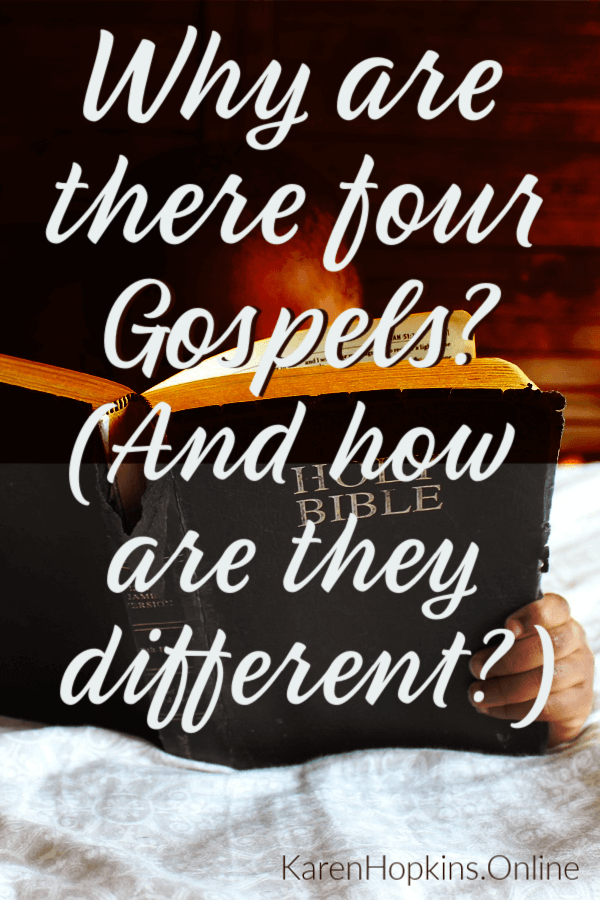
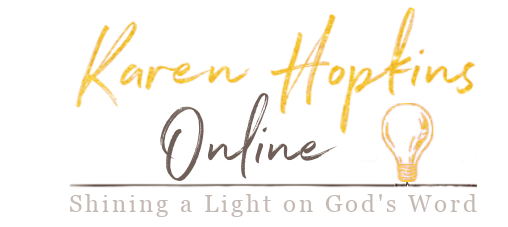
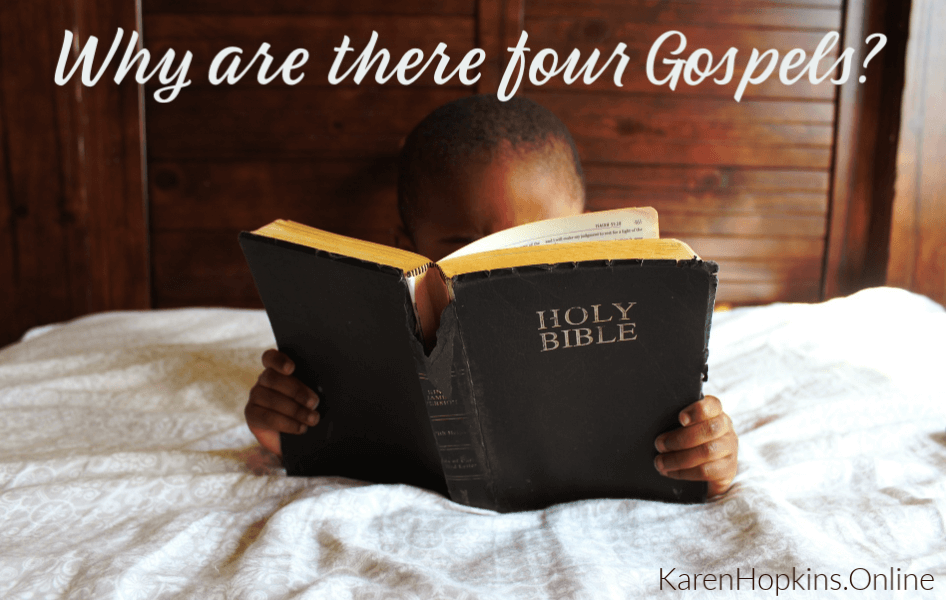


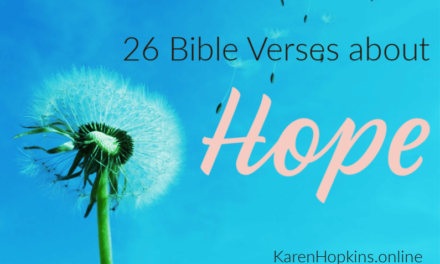


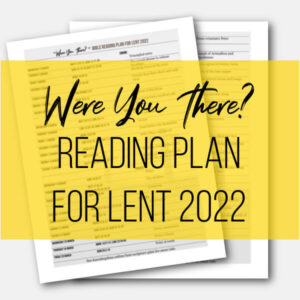
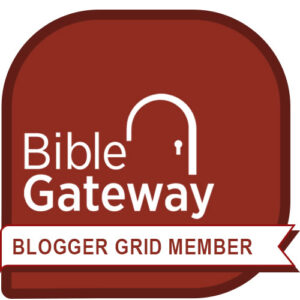
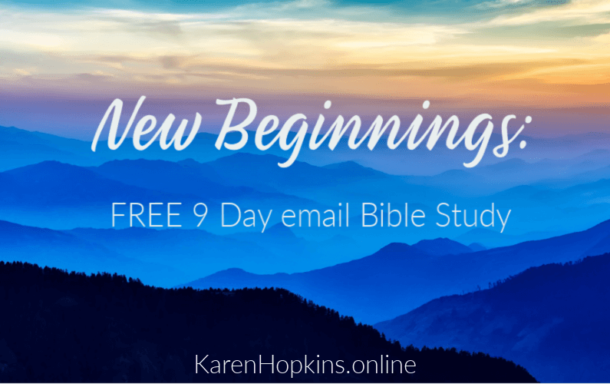
Trackbacks/Pingbacks